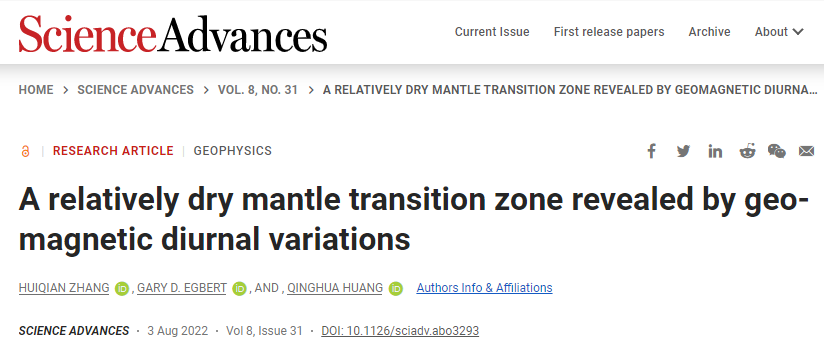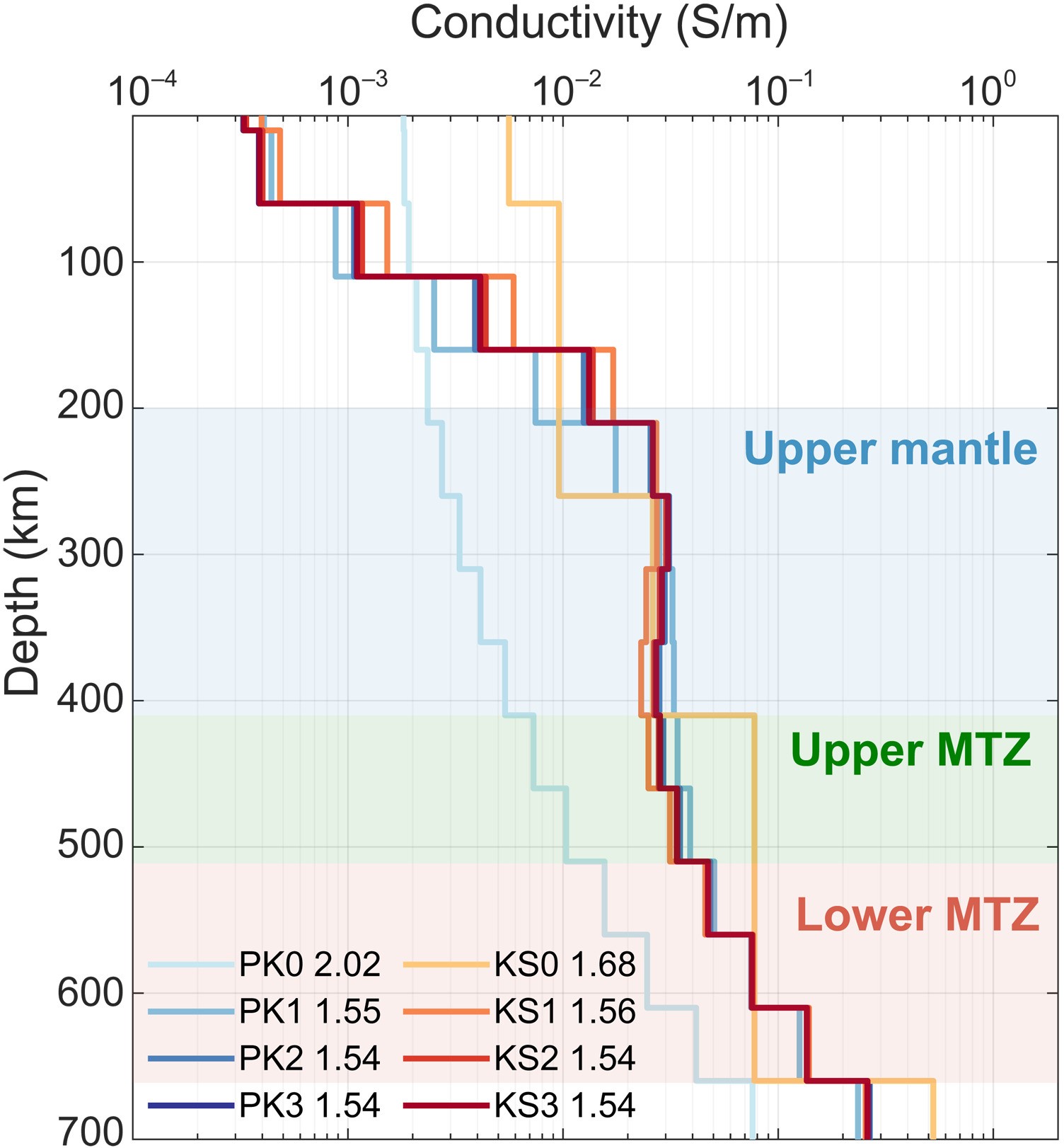New breakthrough made in measurement of hydrogen distribution within mantle transition zone
Aug 18, 2022
Peking University, August 18, 2022: A research team led by Professor Huang Qinghua from the School of Earth and Space Sciences at Peking University, in collaboration with Professor Gary Egbert from Oregon State University, has made a breakthrough in measuring the distribution of water within the mantle transition zone (MTZ).
Their researcher findings were published on August 3 in Science Advances entitled “A relatively dry mantle transition zone revealed by geomagnetic diurnal variations”.
According to the research paper, the distribution of water within the MTZ has important implications for the material circulation and partial melting of the mantle.
Although solubility of hydrogen is very high, leading to speculations that the MTZ plays a key role in the deep-Earth water cycle, the actual water content remains an open question. Electrical conductivity of mantle minerals is very sensitive to water content, so reliable estimates of this physical parameter in the MTZ would provide valuable constraints, the essay highlights.
The research paper, which was co-authored by Professor Huang Qinghua, Professor Gary Egbert, and Zhang Huixi, a postdoctoral research fellow from the School of Earth and Space Sciences, Peking University, adopts recently developed joint inversion of geomagnetic diurnal variation for realistic source structure and one-dimensional mantle conductivity profile.
Global conductivity-depth profile based on DV magnetic fields inversion.
Synthetic tests show that the resulting profile is a reasonable proxy for the electrical conductivity distribution of continental mantle over depths where model resolution is best (200 to 600 kilometer), even in the presence of lateral heterogeneity. The research essay has concluded that the inferred water concentration in the MTZ is 0.03 weight %, one to two orders of magnitude below the solubility of wadsleyite and ringwoodite.
This work was supported by the National Natural Science Foundation of China, National Natural Science Foundation of China, and National Aeronautics and Space Administration.
Source: School of Earth and Space Sciences

